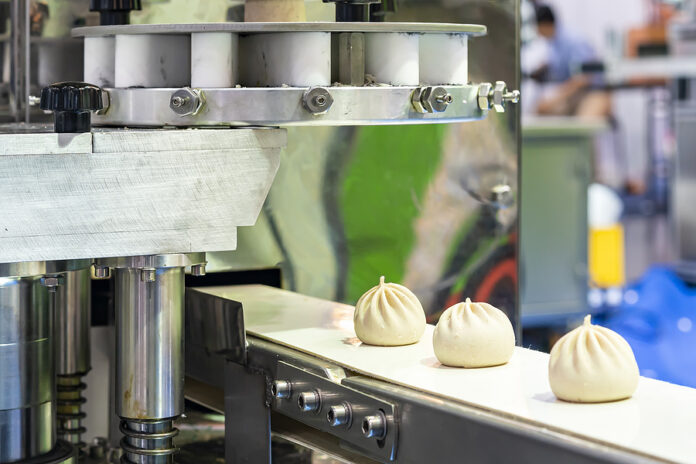
By Eva Maria Hanson, Digital Food Safety Specialist, FoodDocs
HACCP stands for Hazard Analysis and Critical Control Points. It is an internationally recognized method of identifying and managing food safety related risks.
HACCP is a tool to assess hazards and establish control systems that focus on prevention rather than relying mainly on end-product testing.
As part of the food processing industry, it’s imperative for your business to understand the importance of a HACCP plan and implement its principles across all levels of your operations.
There are seven main principles of HACCP:
- Conduct a hazard analysis.
- Determine critical control points (CCPs).
- Establish critical limits.
- Establish monitoring procedures.
- Establish corrective actions.
- Establish verification procedures.
- Establish documentation and record-keeping procedures.
Let’s delve deeper into what each principle involves.
The 7 HACCP principles
1. Conduct a hazard analysis
The first principle involves conducting a thorough risk analysis and identifying potential hazards, which can be biological, physical, or chemical. Examples include cross-contamination between raw and cooked food, harmful metal or glass pieces in food, or contact of toxic detergent with food items.
Your HACCP plan should concentrate on controlling, preventing, and eliminating these hazards in every step of the food production process.
There should be three main objectives of a hazard analysis:
- Identifying potential hazards and associating adequate control measures with them.
- Establishing a basis for determining the critical control points in principle 2.
- Detecting the need for changes to a product/process to enhance safety.
Remember, a thorough hazard analysis is the first and most important step when it comes to HACCP and it should be conducted very carefully. If hazards are not correctly identified, other principles of the HACCP plan cannot be implemented to eradicate them.
2. Determine critical control points
A critical control point (CCP) is the process of determining and implementing necessary prevention measures for a particular hazard. Often, multiple CCPs are required to control a single hazard. To determine CCPs, your team should use the information gathered during the hazard analysis phase.
Some examples of CCPs include metal contamination testing, detecting temperature and pH changes, product formulation monitoring, and chemical residue testing in ingredients.
The total number of CCPs required depends on how many steps your food production process has and the level of food safety controls needed to tackle a particular hazard.
3. Establish critical limits
After identifying CCPs, the next step involves establishing critical limits. Critical limits refer to the range of maximum and minimum physical, chemical, or biological factors at a CCP that should be controlled.
The critical limit is essential for differentiating between safe and unsafe operating conditions and should be established in a way that reduces or eliminates any identified hazards.
Critical limits include scientifically-controlled factors, such as:
- Humidity
- Temperature
- Time
- Moisture level
- Viscosity
- Acidity or alkalinity
- Titratable acidity
- Salt concentration
- Water activity
- Preservative levels
- Chlorine levels
4. Establish monitoring procedures
Once you’ve established clear critical limits for a CCP, you must monitor them. Monitoring critical limits requires planning and sequential operations to verify that all CCPs are under control. It is a systematic process that should be recorded for later verification.
Monitoring your CCPs is vital for two main purposes:
- It helps identify if there is a need for more control over your critical limits. If a limit is not met or is exceeded, monitoring can help you notice the deviation and take proper corrective measures.
- It provides documentary evidence of good food safety practices that are later helpful during the verification phase of HACCP.
When assigning monitoring duties to your staff, make sure to lay down who is responsible for each measurement, how to take each measurement, and the measurement frequency.
5. Establish corrective actions
Even with clearly defined critical limits and thorough monitoring procedures, food safety problems can occur anytime. Whenever there is a potential hazard or a deviation in critical limits, you should take immediate corrective action to prevent further hazards.
At this point, your team should work on identifying the critical measures to stop hazardous food/ingredients from reaching consumers. It’s essential to solve the problem immediately and take the necessary steps to prevent it from occurring again.
Corrective actions must have the following elements:
- Identifying the cause of non-compliance
- Correcting the cause
- Determining the disposition of the non-compliant product
- Recording all corrective actions taken
For some important CCPs, it’s always good to have a corrective action plan laid out just in case you need it. We recommend detailing these procedures in your HACCP plan and referring to them if a deviation occurs. If you’re unsure about the correction procedures for a hazard, contact experts for help.
6. Establish verification procedures
Verification is necessary to ensure that your HACCP system is working as you planned. Ensure that hazards are being efficiently prevented and that your plan is scientifically and technically sound. Elicit the help of experts or scientific studies to verify your HACCP plan if necessary.
7. Establish documentation & record-keeping procedures
You must keep a detailed record of all food safety procedures. The documentation for your HACCP plan should include:
- CCPs
- Critical limits
- Monitoring procedures
- Corrective actions
- Details of all team members
- Summary of hazard analysis
- Time and details of verification procedures
- Supporting details like validation records
- Documents related to employee food safety training
- Expert reviews/food safety certificates
Documenting your HACCP strategy becomes especially useful if your business runs into any type of legal food safety issue.
Final words
You might think creating an HACCP plan that incorporates all of these principles is impossible for a small business. And that was true until the advent of AI.
Today, we have AI-based HACCP generators that can help you create a comprehensive HACCP plan within a few hours.
All you have to do is fill in some information about your food business and these tools generate an editable plan for you that you can change as per your liking. So go and try one out today!
 Eva Maria Hanson, Digital Food Safety Specialist. My mission in FoodDocs is to reverse the misconception of people thinking about food safety as the most boring or scary topic in the business. My target is to educate and inspire everyone who sells or serves food about food safety.
Eva Maria Hanson, Digital Food Safety Specialist. My mission in FoodDocs is to reverse the misconception of people thinking about food safety as the most boring or scary topic in the business. My target is to educate and inspire everyone who sells or serves food about food safety.








